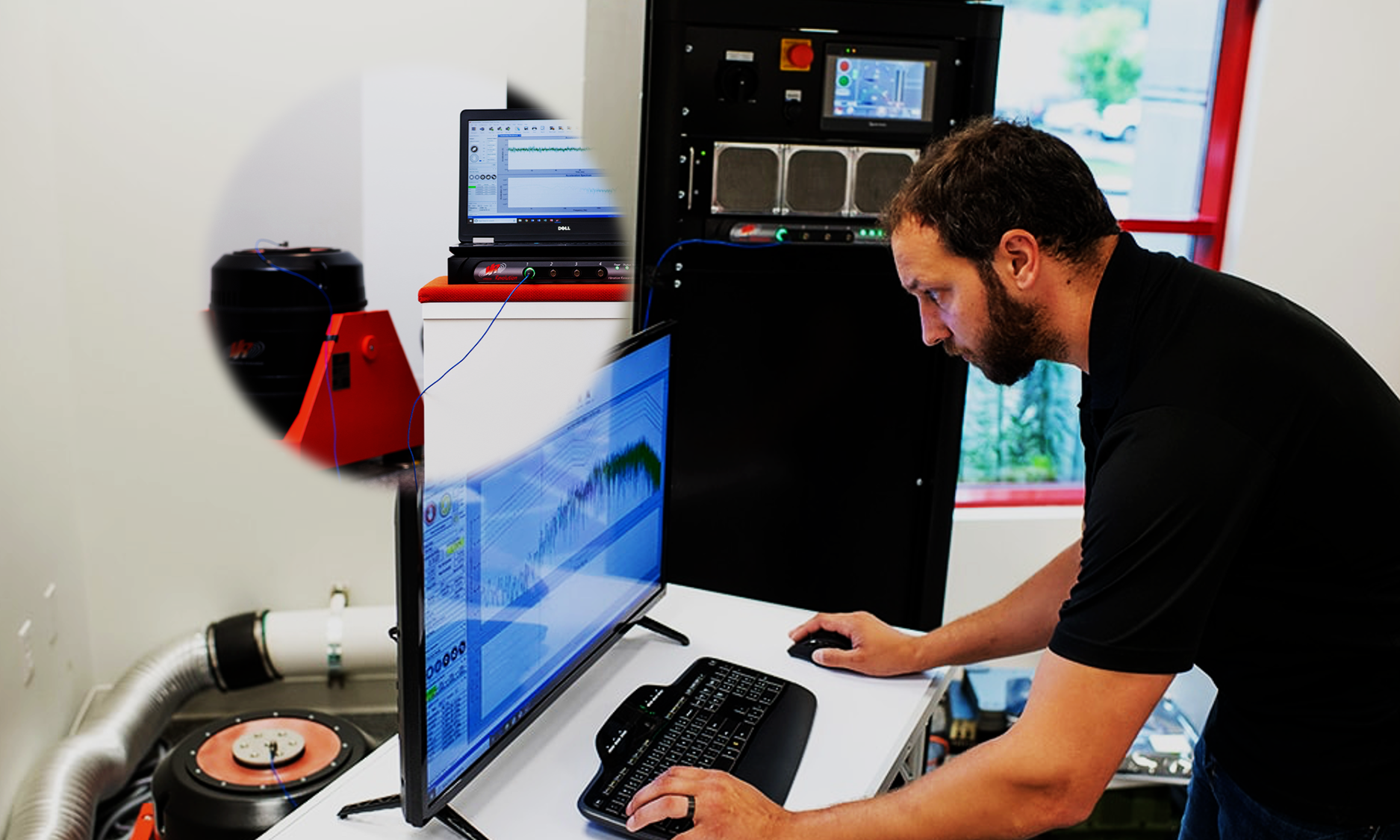While accelerometer is playing the role of feedback sensor at vibration testing system, then vibration controller can be considered as the "brain" of it.
Vibration controller is the device that sending the "instruction" in the form of drive voltage during vibration testing, and also interpreting the feedback signal coming from the accelerometer.
Upon receiving the feedback signal, vibration controller will perform real time post processing to the feedback signal and compare the result to the demand test profile.
Based in this comparison, vibration controller will adjust the drive signal in order to tune the shaker vibration level, to align it with the demand test profile.
This entire process is done in real time during the whole duration of vibration test.
Photo credit: Vibration Research
How to properly select a vibration controller?
If we are just running a standard vibration test profile (sine, random, or shock), we may find out that all vibration controllers look the same.
But if we start to play with more sophisticated vibration test profile, going deeper to tiny detail of the test parameter, we may find out that every vibration controller may have their own advantages and disadvantages.
Below are some aspects that we may want to pay attention when selecting a vibration controller.
Hardware Design
Nowadays, most of the vibration controller units are designed as separate unit from the controller PC. One of the purposes of having this design approach is to isolate the vibration controller unit from the hardware and software issues that normally happens at ordinary PC. By having this type of hardware design, we don't need to worry if anything happens to the controller PC, either hardware or software. When there is an issue with the controller PC, we can just replace it with a new PC and should be able to connect it to the vibration controller unit without any issue. When we find out that the hardware or software at our controller PC is already out to date, we can easily improve it and connect it back to the vibration controller unit. Commonly, this kind of hardware design will have the software license to be attached to the vibration controller unit. Therefore, when we replace the controller PC or improve the software, we may not need to apply for new license, since the controller PC can easily read the software license from the vibration controller unit once those are connected to each other.
Number of Channels
In the beginning, when we purchase a new vibration testing system, we may only need one or two feedback channels to run our vibration test, since we only start to run simple type of test with relatively small and simple test object. As time goes by, we may expand our scope of test with more advance type of test with relatively bigger and more sophisticated test object. In this case, we may think that we may need a greater number of feedback channels since we have more measurement points to be monitored during the vibration test. For this reason, nowadays most manufacturers design the vibration controller unit to be expandable according to our growing requirement. Commonly, one unit of vibration controller can accept from four up to 16 feedback sensors. Though, the vibration controller is normally designed to be stackable. By stacking up more than two or more vibration controller units, we increase the number of feedback channels and the scale of our measurement as well.
Data Synchronization
Vibration controller unit normally will be connected to controller PC through ethernet cable with RJ-45 connector, allowing those to communicate through internet protocol. This type of communication setting makes it easier for the controller PC to work together with multiple vibration controller units. The controller PC and all the vibration controller units will be connected to a high speed ethernet hub, to form like a local area network. One of the controller unit may act as master unit, while the other units will act as slaves. One of important factor of this multiple vibration controller unit’s setup is synchronization between measurement channels at different vibration controller unit. In order to have proper measurement results and to accurately run the vibration testing, vibration controller needs to have all the feedback channels to be synchronized, including the one at the slave units.
Type of Accelerometer
Most of vibration controllers can accept IEPE type of accelerometer, which is the most common type of accelerometer used during vibration testing. Few of them can accept also charge accelerometer. Charge accelerometer is used also for some application in vibration testing, especially combined vibration testing with climatic chamber. For vibration controller which are not able to accept charge accelerometer, we will need a signal conditioner to be connected to accelerometer before the vibration controller unit. The similar thing applies to MEMS sensor, which need special signal condition before it is connected to vibration controller unit.
Software Test Modules
If we just plan to run a standard vibration test profile (sine, random, or shock), most of vibration controller should be able to perform the test without any issue. But if we start to run test at non-standard frequency range or acceleration level, or start to use non-standard type of test (Sine on Random, Random or Random, Shock Response Spectrum, Field Data Replication, etc), we may start to find the difference between vibration controller. Few of manufacturers develop their own algorithm or even special testing modules that are not provided by other manufacturer. Few of manufacturers also develop special algorithm to run multiple vibration test machines or multiple axis vibration testing machines simultaneously.
Do you need Vibration Controller or Vibration Testing System?







